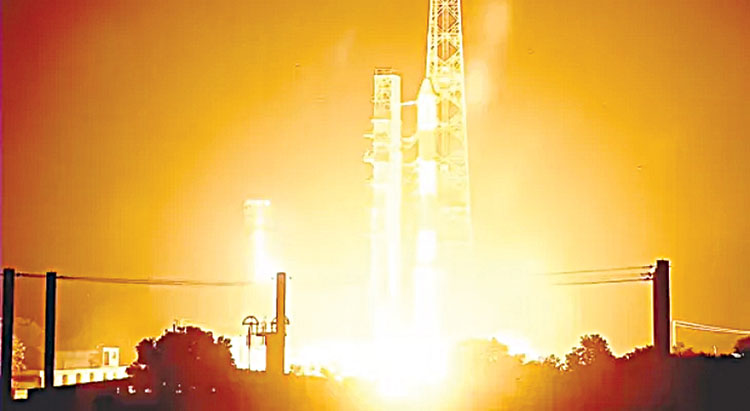Sriharikota, Feb 14 (Agency) India’s Polar Satellite Launch Vehicle PSLV-C52 injected Earth Observation Satellite EOS-04, into an intended sun synchronous polar orbit of 529 km altitude at 0617 hours on Monday from Satish Dhawan Space Centre (SDSC), SHAR in Sriharikota on Monday. After a smooth countdown of 25 hours 30 minutes, PSLV-C52 launch vehicle lifted off at 05:59 hours from the first launch pad at SHAR in the opening of the launch window. The important flight events, namely, stage & strap-on ignitions, heat shield separation, stages & strap-on separation, satellite injection took place exactly as planned. The countdown process of 25 hours and 30 minutes leading to the launch commenced at 4.29 am on Sunday after authorisation by the Launch Authorization Board. This was the 80th launch vehicle mission from SDSC SHAR, Sriharikota; 54th flight of PSLV; and the 23rd flight of PSLV in XL configuration (6 strap-on motors). The satellite EOS-04 is realised at U R Rao Satellite Centre, Bengaluru. It is a Radar Imaging Satellite designed to provide high quality images under all weather conditions for applications such as Agriculture, Forestry & Plantations, Soil Moisture & Hydrology and Flood mapping. Weighing about 1710 kg, it generates 2280 W power and has a mission life of 10 years.
The vehicle also placed two small satellites a student satellite (INSPIREsat-1) from Indian Institute of Space Science & Technology (IIST) in association with Laboratory of Atmospheric & Space Physics at University of Colorado, Boulder and a technology demonstrator satellite (INS-2TD) from ISRO, which is a precursor to India-Bhutan Joint Satellite (INS-2B). Co-passenger satellites were successfully separated from the PSLV in a predetermined sequence. The Mission Control Room was abuzz, as the launch director announced that all three satellites were successfully deployed. ISRO Chairman S Somanath congratulated team ISRO for the precision with which the mission was accomplished. After a flight of about 17 minutes 34 seconds three satellites namely EOS-04, INSPIREsat-1 and INST-2TD were injected successfully into a sun-synchronous polar orbit of 529 km. The orbit achieved for the satellites is very close to the intended orbits. After separation, the two solar arrays of EOS-04 deployed automatically and ISRO Telemetry Tracking and Command Network (ISTRAC) at Bangalore has assumed the control of the satellite. In the coming days the satellite will be brought to its final operational configuration following which it will begin to provide the data. With the first launch of 2022, ISRO has set in motion 18 other missions planned for later this year, including the high profile launch of Chandrayaan-3 to the Moon and the much-awaited unmanned Gaganyaan. This mission of PSLV saw the launcher climb up in the SSO. The space agency plans to conduct the PSLV-C53 mission in March, which will carry OCEANSAT-3 and INS 2B ANAND into orbit. Somnath earlier had said the agency plans five major satellite launches in the coming three months and a total of 19 missions this year.

